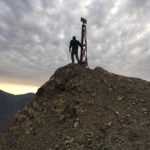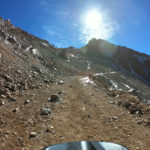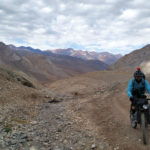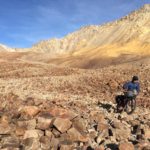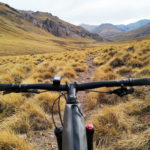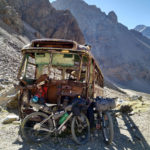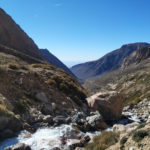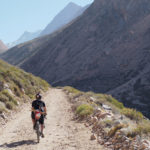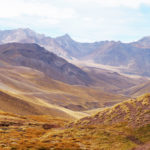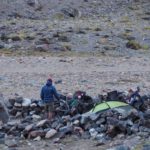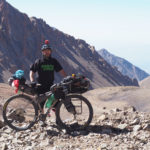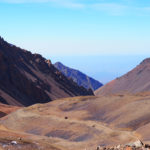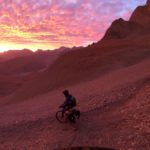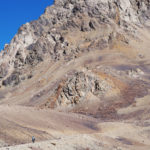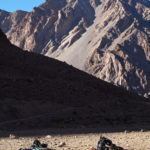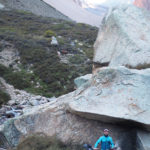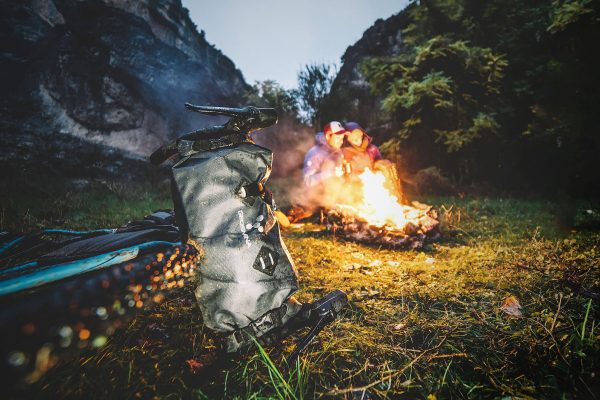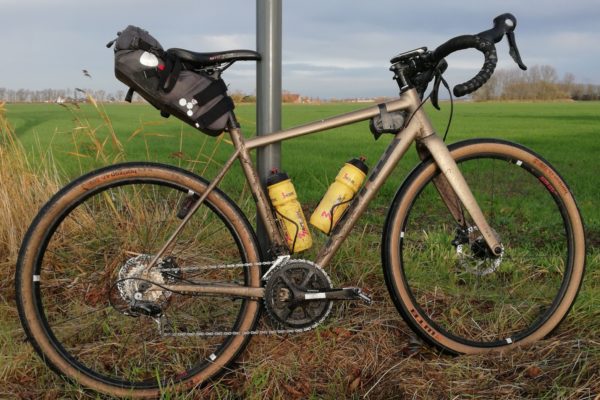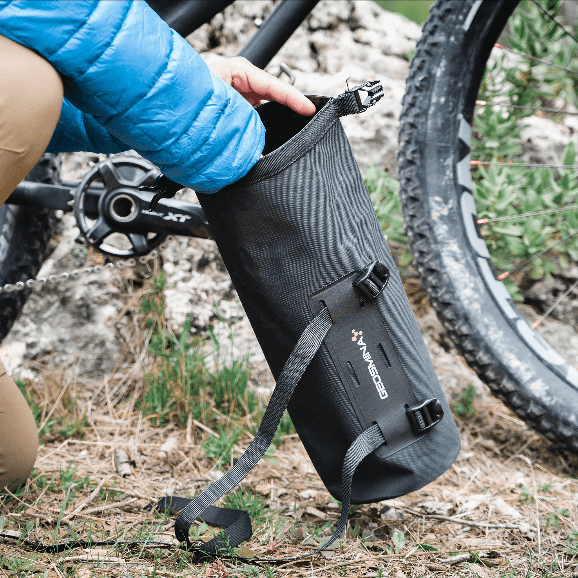Facing the walls of Los Andes
Stones, fine gravel, volcanic ash, snow and ice are part of the crossing of the Andes mountain range from Mendoza (Argentina) to Cajón del Maipo (Chile). Kilometers of stony roads and mule trails where riding was very difficult, if not impossible. The road was much harder than we had imagined, which explains the small number of cyclists that challenge its two highest points: the Portillo Argentino (4380 masl) and the Paso Piuquenes (4000 masl). For those who do, altitude and cold complete a journey that is very demanding physically and psychologically and that test those who try to cross this lonely mountain pass.
Only a month before we started to planned the route. I didn’t hesitate when I received the call of my brother Martin with this idea in mind. Cross the Andes mountain range through an inhospitable pass that few cyclists visit. A few weeks later we would land in Mendoza, Argentina with all the equipment ready to begin the journey. Martin and I had bickepacked around Iceland a few years ago and from then on, we knew that we would travel together again. The selected route, which is part of one of the San Martinian Routes to carry out the liberating expedition of Chile and Peru, was the ideal scenario to meet again traveling. We had studied the trails through satellite images and GPS tracks marked by other travelers. It seemed possible. At least on paper it was.
The road was much harder than we had imagined, which explains the small number of cyclists that challenge its two highest points: the Portillo Argentino (4380 masl) and the Paso Piuquenes (4000 masl).
The first two days were relatively accessible. A gentle but steady slope accompanied us along the entire path. The interesting stuff began on the third day. We faced the majesty of the mountain range. In the distance, at the summit, a tiny crack in the rock indicated that we would pass through there and begin the descent to the valley that surrounds the Tunuyán River. The ascent to the summit of Portillo Argentino was hard. The last 300 meters were very physically challenging. Without being able to ride and walking along a narrow path of snow and stones we reached the summit. The immense, but short, joy of reaching the mountain pass was dissipated by the cold wind that leaves you without wanting to take a minute to contemplate the scene or thinking about the achievement we just reached. The descent was as complicated as the climb. The “Curva de las Mulas”, a cliff of 300 meters that has claimed the lives of hundreds of mules that accompany the muleteers (arrieros) in the summer crossings, reminded us that, despite the fatigue, we had to keep focused to the maximum.
The geography of the trail marked us a very slow pace that did not allow us to escape from the night. We knew that ahead there was a refuge, but to cross those roads at night supposed an extra risk that, in the conditions that we were, it was not very smart to take. The advantage provided by the full moon when it come out, allowed us to reach the shelter in the middle of the night almost collapsing from fatigue.
The “Curva de las Mulas”, a cliff of 300 meters that has claimed the lives of hundreds of mules that accompany the muleteers (arrieros) in the summer crossings, reminded us that, despite the fatigue, we had to keep focused to the maximum.
When preparing the route and studying the road we had identified that the crossing of the Tunuyán River was the most critical point of the journey. The travelers usually cross it in the first hours of the morning riding on the mules of the muleteers who make the crossing from December to February. And there we were, in April and without any muleteer in hundreds of kilometers around. It would have to be crossed on foot. At this point the Geosmina bags performed at maximum. Despite the cold when crossing the river, our belongings and clothes remained completely dry. The next two days we went up the Palomares River, sinuously approaching the border between Argentina and Chile. The wild vegetation and an amazing wild fauna accompanied us until the landscape began to transform radically reaching something similar to the surface of Mars.
It seemed that a random color palette had combined perfectly to compose a dream scene. There was little left. The Paso Piuquenes looked closer and closer. It is difficult to describe the degree of fatigue of that moment. Martin and I walked in a row. I set small goals for myself. Reach the next stone and rest. Breathe. The air pressure was felt. Martin followed me. Then he would confess that his goal was to follow my movements and rest when I did. We were both exhausted.
The wild vegetation and an amazing wild fauna accompanied us until the landscape began to transform radically reaching something similar to the surface of Mars.
Reaching Paso Piuquenes was a strange feeling. Without even smiling, I felt happy. The fact of being there with my friend and brother. We stood there and hugged each other. Mountain hugeness makes us feel tiny, but comfortable.
Ignacio Gianelli


